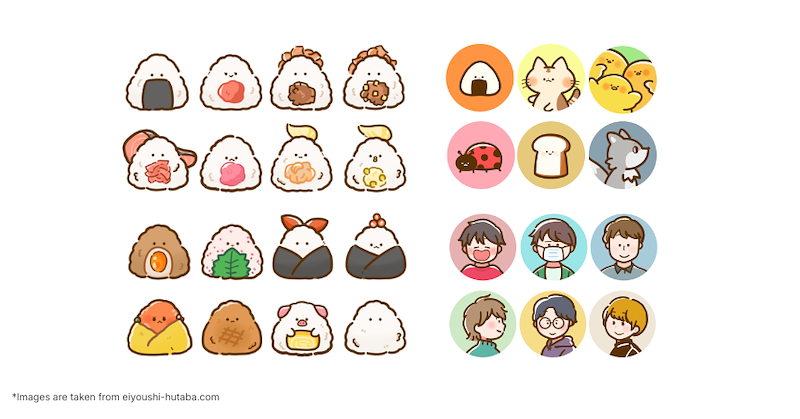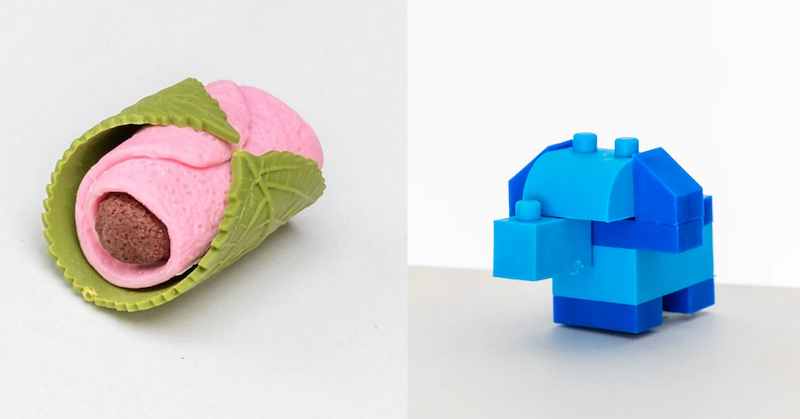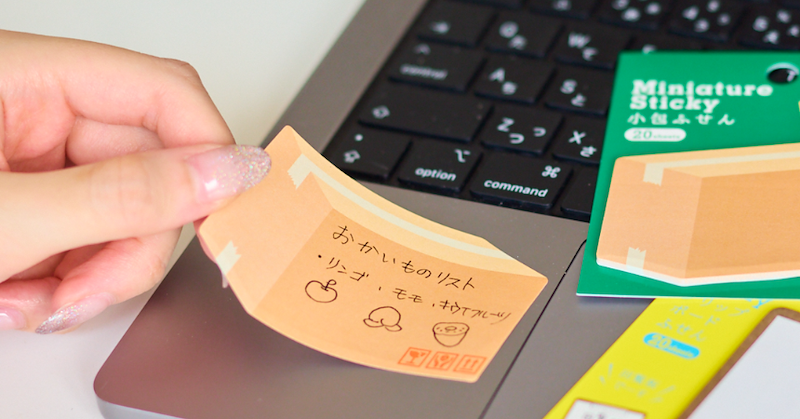
Differences between Japanese and Chinese Calligraphy
When it comes to calligraphy, the strokes of a brush unveil beautiful scripts with deep meanings. Japanese and Chinese calligraphy are some of the most popular types of calligraphy that tell the unique stories of their respective cultures. Nowadays, many people even get tattoos of these kinds of calligraphy without knowing what it means. Chances are, they can’t even tell the difference between Japanese and Chinese calligraphy as well.
Even though learning the meaning of the characters is a long stretch, it’ll be cool to at least learn the difference between Japanese and Chinese calligraphy so that when you see it, you can easily identify it. Let’s explore details that make Japanese and Chinese calligraphy special, exploring how they've evolved, the tools used, and the ideas behind them.
What’s the Difference in Looks?
Chinese Calligraphy
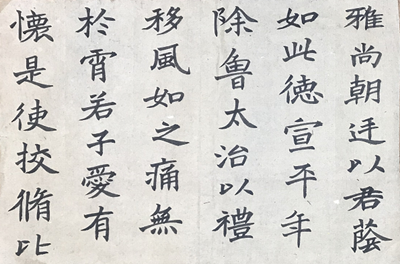
Chinese and Japanese calligraphy look very similar, but Chinese calligraphy often presents a majestic and flowing aesthetic using only KANJI characters. The characters have bold strokes that are strict because they imitate the original script. For instance, if someone is writing a particular kanji character, it has to follow the flow of the original script to a T; anything less is seen as a failure, and you can’t try to be artistic by doing something different.
Japanese Calligraphy
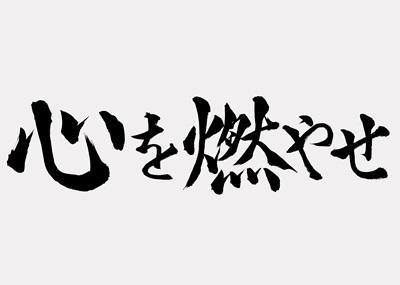
Japanese calligraphy uses a mix of Kanji and Kana characters. For instance, the script above has both Kanji and hiragana characters. Japanese calligraphy carries a nuanced simplicity that speaks volumes. The characters, whether Kanji or Kana, are often characterized by a refined and deliberate aesthetic. Calligraphers make beauty a key part of the project and are allowed to redefine the characters in a more artistic way. It is not as strict as Chinese calligraphy.
Origins and Evolution
Chinese Calligraphy
Chinese calligraphy or Shufa, often considered the originator of East Asian calligraphic traditions, dates back thousands of years. Its roots can be traced to the Shang Dynasty (1600–1046 BCE), which was 3000 years ago when inscriptions on oracle bones marked the earliest form of written Chinese characters. Back then, calligraphy was used to judge one’s character, people with good handwriting were regarded at higher standards. Calligraphy could bring prestige and power to people who were exceptionally good at it.
Over time, Chinese calligraphy evolved, embracing various styles such as Seal Script, Clerical Script, Regular Script, Running Script, and Cursive Script. Each style reflects changes in writing techniques and also the cultural, political, and artistic shifts across dynasties.
Japanese Calligraphy
Japanese calligraphy, on the other hand, has its roots in Chinese calligraphy, introduced to Japan around the 6th century CE through cultural exchanges. Initially, Japanese calligraphy used only Chinese styles, but over time, it evolved into other forms. Chinese and Japanese languages are completely different, so Japanese writers could not capture some of the tones in Japanese using Chinese characters only. They decided to create their own Japanese scripts, such as Kanji (adopted Chinese characters) and Kana-hiragana and katakana (syllabic Japanese scripts). Japanese calligraphy not only absorbed the essence of Chinese traditions but also forged its own path, capturing the spirit of Japan's aesthetic philosophy. Today, it is known as Shodo, and it is a popular class taught to students in all stages of school.
Tools of the Trade
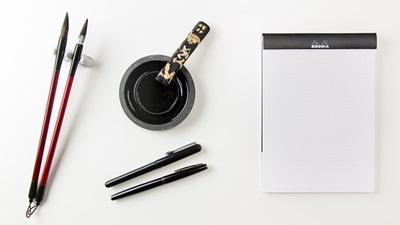
Chinese Calligraphy
In Chinese calligraphy, the brush, ink, paper, and inkstone are collectively known as the "Four Treasures of the Study." The brush, typically made of animal hair, ranges in size and shape to accommodate various styles. Today, people use more modernized bruises or even pens for calligraphy. The second tool is the ink, which is traditionally in solid stick form. The calligrapher grounds it on an inkstone with water to achieve the right consistency. Nowadays, there is pre-mixed ink sold in bottles where you don’t have to ground sticks.
Chinese calligraphers also use Xuan paper, popular for its ability to absorb ink and high qaulity to write. Some people also use paper weights to prevent it from slipping. The synergy of these tools allows the calligrapher to create beautiful strokes, from bold and powerful to delicate.
Japanese Calligraphy
Japanese calligraphy, known as Shodo, also relies on the same essential tools used in Chinese calligraphy, although the tools have different names. The Fude (brush) comes in various sizes and materials, with softer brushes preferred for expressive styles. Sumi (ink stick) is traditionally made from soot and animal glue, and it is mixed using the same process the Chinese calligraphers used. Washi (Japanese paper) is another crucial component, with a range of textures and thicknesses to complement different calligraphic styles. Together, these tools become extensions of the artist's intent, translating emotions and thoughts into brushstrokes.
Calligraphy as a Spiritual Art
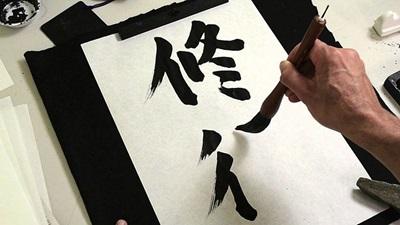
Chinese Calligraphy
In Chinese culture, calligraphy is not confined to the realm of art but extends into everyday life and rituals. The word “shufa” translates to “law of writing.” The mastery of calligraphy was traditionally considered an essential skill for scholars, reflecting one's education, refinement, and moral character. Only people who were literate and belonging to high social classes could practice calligraphy. At that time, becoming a monk was one of the few ways lower-class citizens could practice their calligraphy while copying religious texts.
Because people were expected to copy texts exactly how they were written, the act of writing itself became a meditative practice. Today, there are many scrolls adorned with calligraphy that often find a place in homes, conveying blessings, wisdom, and artistic beauty.
Japanese Calligraphy
Similarly, Japanese calligraphy is not only art. “Shodo” means “way of writing” and it is deeply intertwined with Japanese culture like traditional tea ceremonies, martial arts, and religious rituals. Shodo is a way for people to cleanse their minds through writing. The brushstrokes in Shodo are a spiritual journey, allowing the artist to connect with the moment and express the essence of their being.
Japanese martial artists trained in calligraphy to improve their mental discipline and concentration. Calligraphy involves repeating strokes until you reach perfection, and martial arts training is similar. There are popular martial arts calligraphy poems like 剣者心也 or “Your sword mirrors your mind.” This phrase is written by martial arts masters and trainers so that they would embody the phrase and live by it.
The differences between Japanese and Chinese calligraphy go beyond just the strokes on paper; they tell us about the spirits of the two nations. Chinese calligraphy reflects the grandeur of a big empire with its long history, while Japanese calligraphy, born from a mix of cultures, shows the nuanced beauty of an island nation. As we unroll the scrolls of their stories, we find not just differences but also a shared love for the art of shaping characters with a simple brush.
For those obsessed with the artistry of calligraphy, get connected with Japan by diving into the world of ZenPop Stationery!
This article was originally written by our freelance writer Umm-Kulthum Abdulkareem and edited by us.
